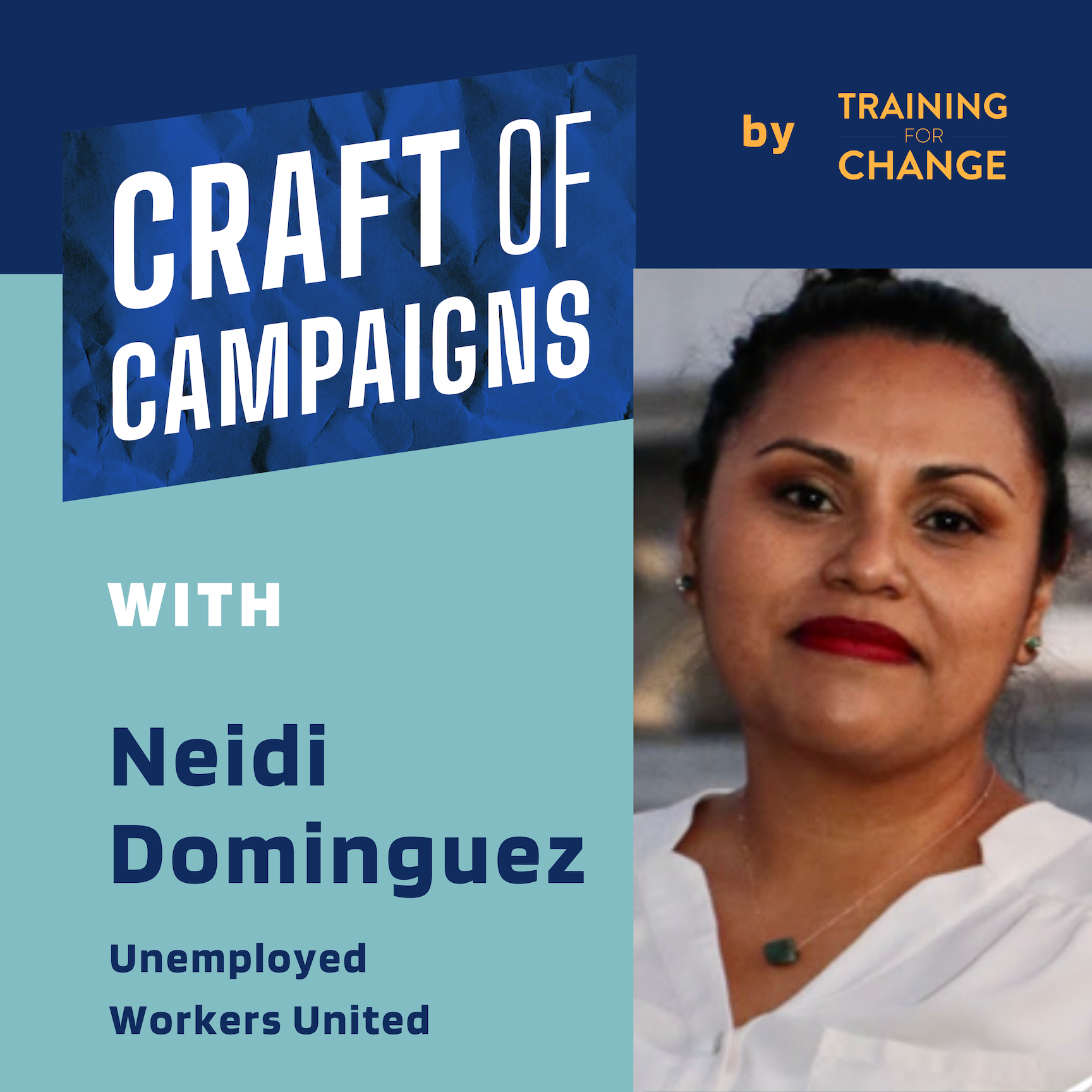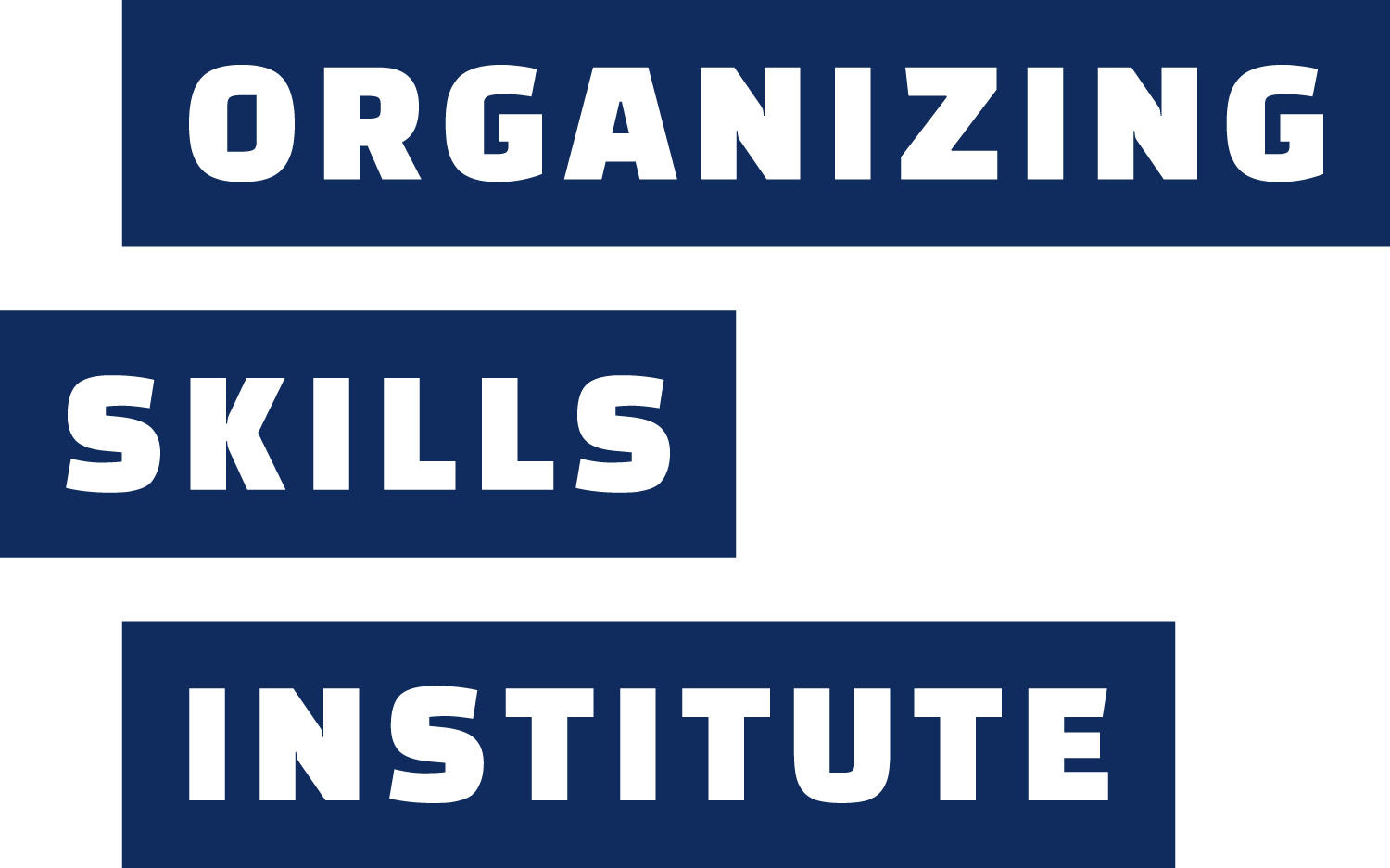S1 E1: Neidi Dominguez on “not listening to DC” & embracing disagreement in the fight to win DACA
November 15, 2022
Episode Guest
Neidi Dominguez is the Executive Director of Unemployed Workers United (UWU), and is a national immigrant and worker’s rights activist and organizer. Previously she has worked as the National States Deputy Director of the Bernie Sanders 2020 presidential campaign, for multiple labor unions, and as the co-director of the CLEAN Carwash campaign that successfully unionized hundreds of workers. Formerly undocumented herself, Neidi was a central leader in the campaign to win Deferred Action for Childhood Arrivals (DACA).
Lessons from the Campaign to Win the DACA Executive Order: “Not listening to DC”, embracing disagreement & using multiple strategies to move a Democratic president
by Andrew Willis Garcés | also published in The Forge
Download as a PDF
Ten years on from a historic victory that shielded a million immigrants from deportation, the story that gets re-told today, depending on who you’re listening to, might be, “Obama gave ‘Dreamers’ the protection they were asking for,” or, “the ‘immigrant rights movement’ pushed him to do the right thing.”
Neidi Dominguez, one of many undocumented campaigners pivotal to the successful campaign, reflects on the time between then and now differently. “The same DC advocates telling us we were crazy or that it was impossible, are the ones picking up the mic now ten years later telling everyone they have to protect DACA,” said Neidi. “Don’t believe them when they tell you what’s possible.”
Her version of the story begins years before that, growing up as the daughter of immigrant activists, and then as a youth organizer at UC Santa Cruz, before campaigns she helped lead made in-state tuition possible, and even before the huge marches across the country on May 1st, 2006, that many point to as the high-water mark of Latinx immigrant uprising. She recounts watching as “the DC organizations” made federal immigration reform — through passage of a comprehensive bill by the full Congress — the key objective in 2007, 2008 and 2009. And in 2010, “that was the first time we began to make our own calls on strategy,” moving away from “comprehensive immigration reform” as the goal and the strategy. She and other members of the LA Dream Team met other organizers, like Tania Unzueta in Chicago, who had organized the first “Coming Out of the Shadows” rallies, teaming up for sit-ins at DC and at congressional offices around the country.
Their efforts paid off: Majority Leader Sen. Harry Reid, feeling pressure from the “left flank” risking arrest around the country, committed to bringing the DREAM Act to a vote. When it failed to get enough votes to pass in the Senate, immigrant youth organizers once again split from mainstream groups based in DC, choosing to focus in 2011 on winning presidential protection from deportation for undocumented immigrants who had come to the US as children. As she says, they were criticized by “the right, the middle, the left”. But they were missing the ‘long game’ the younger organizers had planned out. “The whole point was to win protection for all. We figured, if we can get him to say we deserve protection, what argument could they use to deny our parents? We would go from DACA to DAPA.”
But even with broad alignment among younger undocumented organizers on the strategy and the goal, there were disagreements and difficult debates within and between youth organizing formations. “Some of the most painful were about who were the right spokespeople. We have more language now to understand the made-up dichotomy about good immigrants versus bad immigrants, ‘should we wear a cap and gown’… We knew and felt that it was so wrong and unfair but didn’t have the political maturity to know at that moment that our movement was going to be so strong and able to withstand and be ok with having our friends who had been caught with a DUI be spokespeople,” she said. But, she notes, they didn’t let the debates slow them down.
Different formations “turned up” on the president throughout the year, chaining themselves to the White House gates, and interrupting multiple appearances around the country wearing shirts that read “Obama Deports Dreamers”. In August DHS announced a review of all cases currently in removal proceedings, including closing many outstanding deportation cases, although falling short of providing any permanent protection even for those people. In October Neidi’s group launched the Right to Dream Campaign in 2011 with a civil disobedience at a Department of Homeland Security facility, which prompted the Obama Administration to double down on its claim that the executive protection they were asking for was unconstitutional.
“So, we convened our own lawyers,” Neidi says, and in the process not only came up with their own legal arguments, but discovered that then-DHS attorney Alejandro Mayorkas had composed a memo about Obama’s executive powers as early as 2009. (Among their research highlights: discovering that John Lennon had been granted deferred action from deportation!) As they worked to push acceptance of the administration’s ability to unilaterally shield immigrants, other formations turned up the heat in other ways. The National Immigrant Youth Alliance began organizing sit-ins at Obama reelection campaign offices, prompting administration officials to look for dialogue with leaders from other organizations, like Neidi. As she recounts, “we knew of each other, but no one was coordinating every single action”, crediting them with initiating an attention-getting tactic that brought the White House to the negotiating table.
By May, with protests also taking off at ICE offices and Senate offices around the country, DHS invited attorneys working with the LA Dream Team to discuss their demands at the White House. But because Neidi and other leaders insisted on coming, they had to meet at a hotel across the street; being undocumented, they wouldn’t pass the White House background check. “They thought it would just be attorneys talking to attorneys, but we had asked ours not to speak until we asked them to,” she said. They had come armed with a letter signed by 96 law professors affirming the president’s power to grant deferred action, and just to make sure they wouldn’t leave empty-handed, had arranged for a news outlet to publish news of the letter and of the secret White House meeting while the meeting was underway. And the group gave the administration two weeks to take action, “or we’ll escalate”. A week later, inspired by the ‘inside game’ news that had been leaked to national reporters, other young immigrants started occupying Obama campaign offices, prompting White House aides to call Neidi and the others, asking, “What happened? You said we had two weeks!” “We said, ‘we told you we couldn’t control what would happen’. It really put pressure on them,” recounted Neidi.
Fifteen days after the meeting with White House officials, President Obama announced Deferred Action for Childhood Arrivals. “I’ll never forget it, it was my mother’s birthday,” said Neidi. “We had 150 young people blocking a freeway exit as part of the DREAM Summer Internship with the LA labor center, and since 5am we had been getting texts telling us something was going to happen. We debated, ‘should we go through with it?’ But I thought, ‘it’s not true until it’s true’.” Many immediately pivoted to demanding the administration expand protections to the other 11 million undocumented people, even riding an Undocubus and carrying out direct actions across the country on the way to the Democratic National Convention. (Two years later, in November 2014, Obama announced deferred action for parents (DAPA), which was eventually struck down by federal courts.)
They had done it: they had secured executive action designed to protect millions from deportation by bucking the mainstream consensus that a congressional act was the only way that could happen, and that go-slow, nonconfrontational advocacy strategies were the best way to create the political will needed. They were able to embrace multiple strategies across different formations, which sometimes created productive tension with their target, President Obama, and other times generated internal conflict as well. Neidi credits that willingness to lean into disagreement on strategy with much of their success. “We consulted, sometimes hundreds of us, spending six hours together in a room. I will never forget the commitment and discipline that my peers and I had, that we took that as seriously as we did gave us so much grounding to make the decision together, even if we weren’t happy about it. I see less of that now.” This willingness to lean into disagreement, while still continuing to focus on a single demand, using both “inside game” advocacy strategies and an “outside” pressure campaign, is a recipe others of us looking to push a Democratic president can surely borrow from again.


